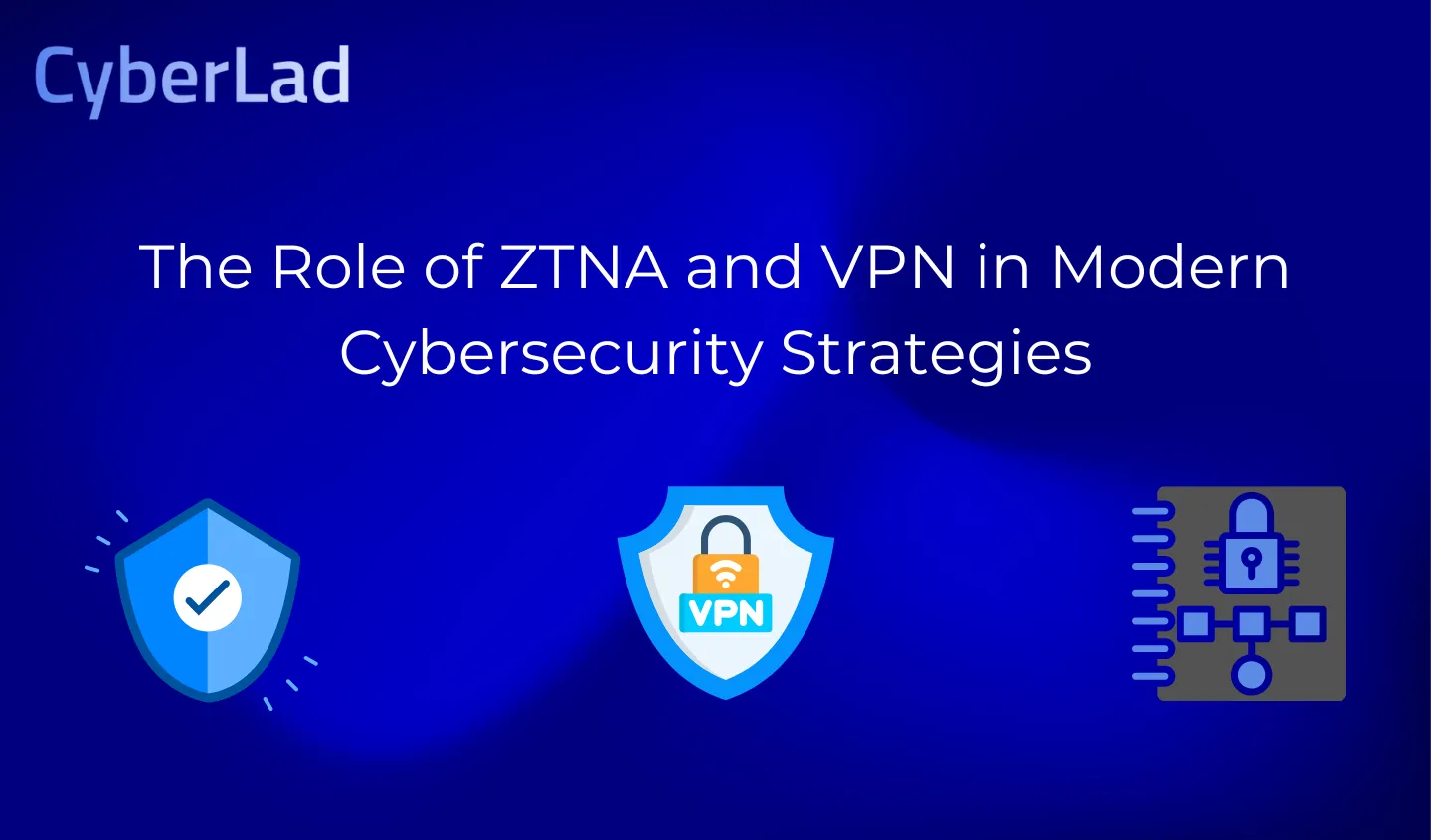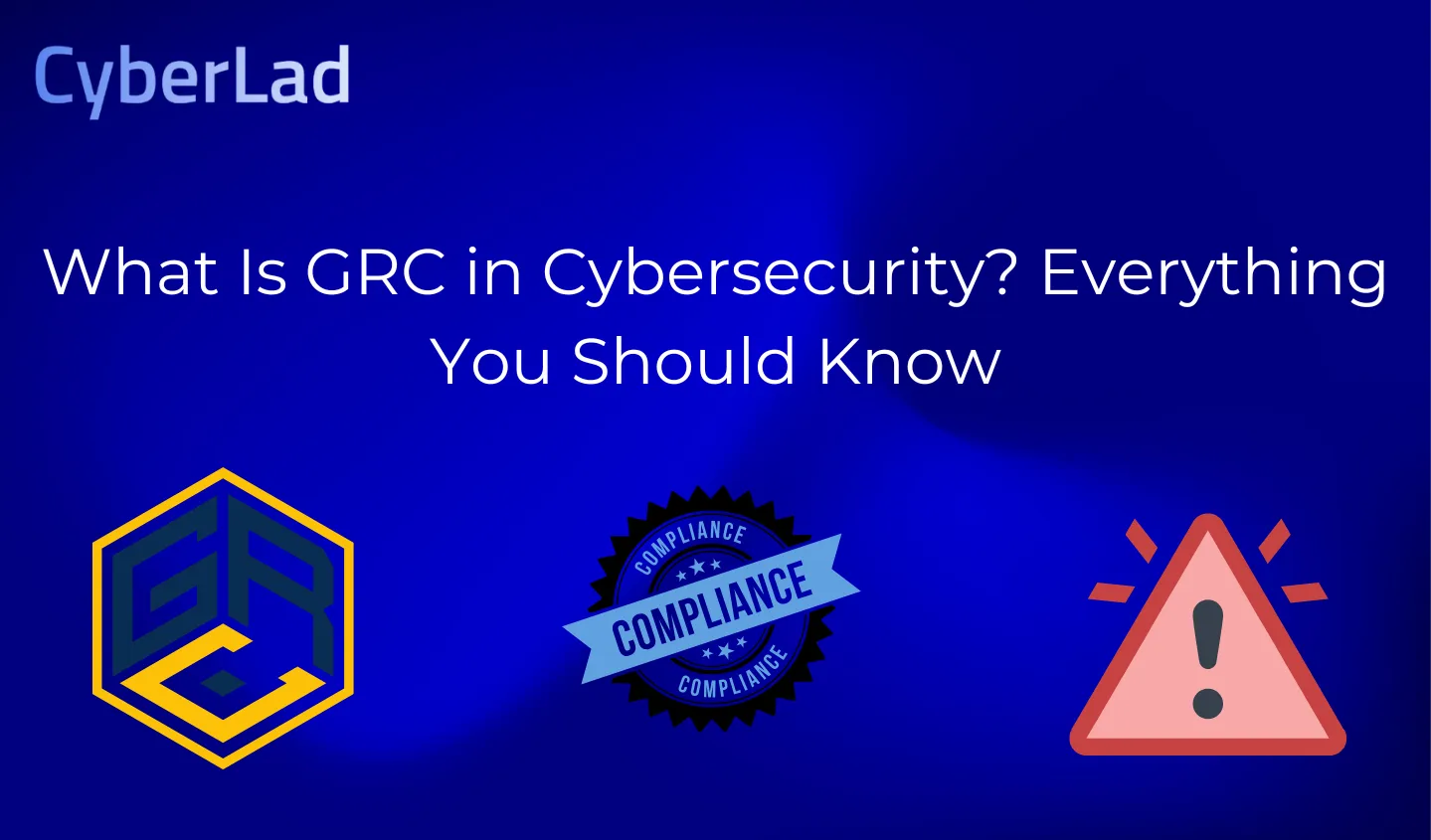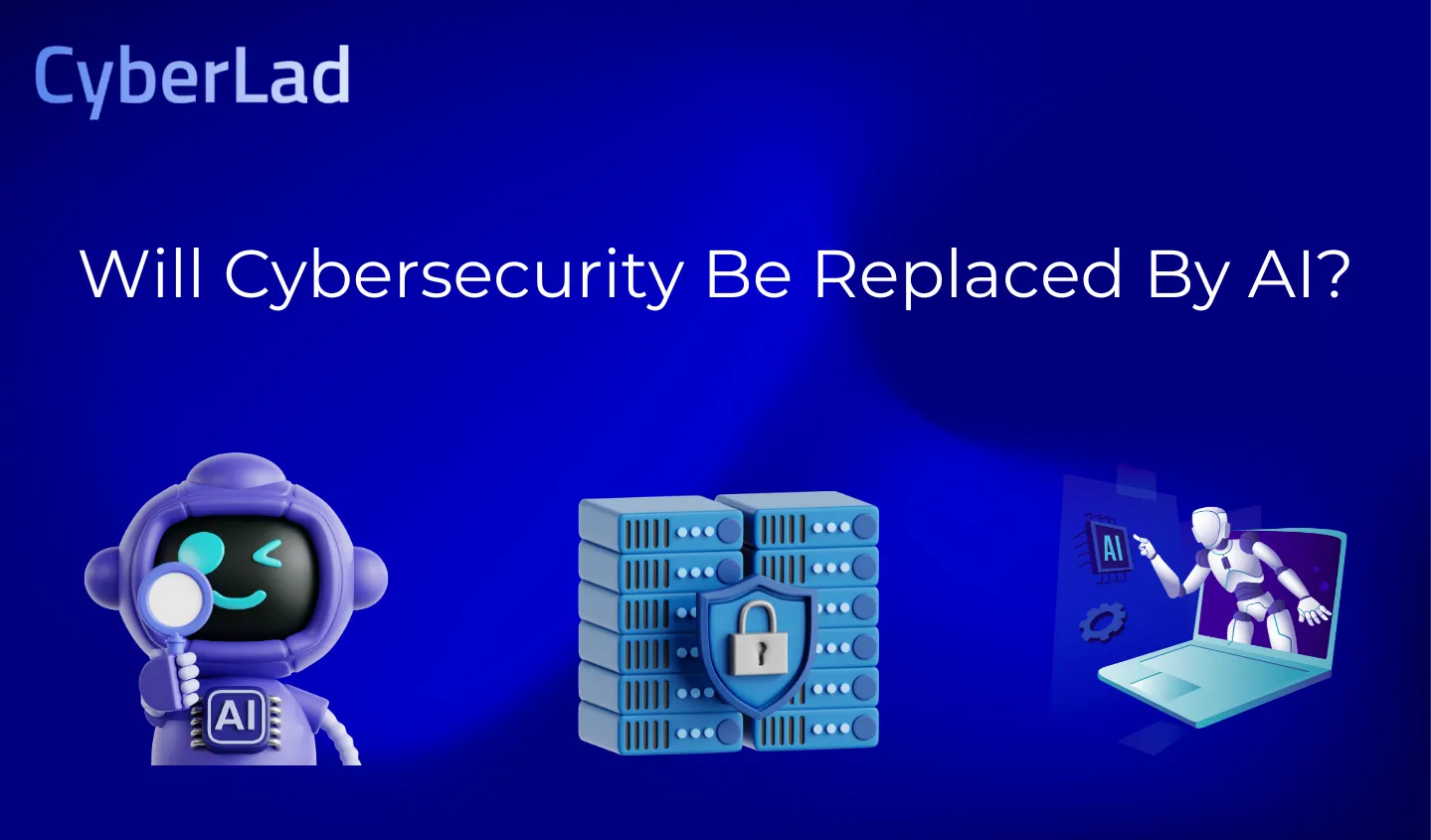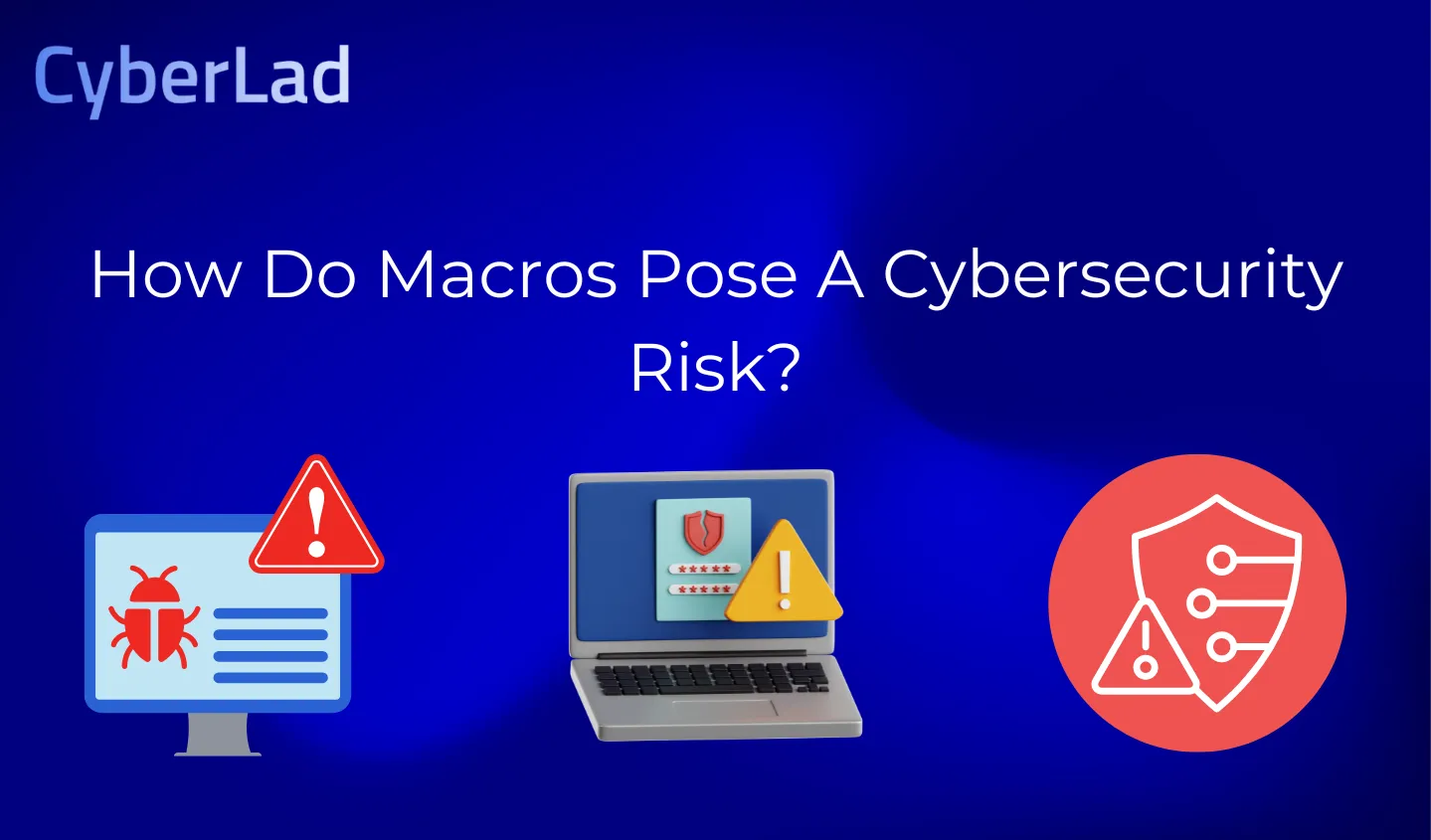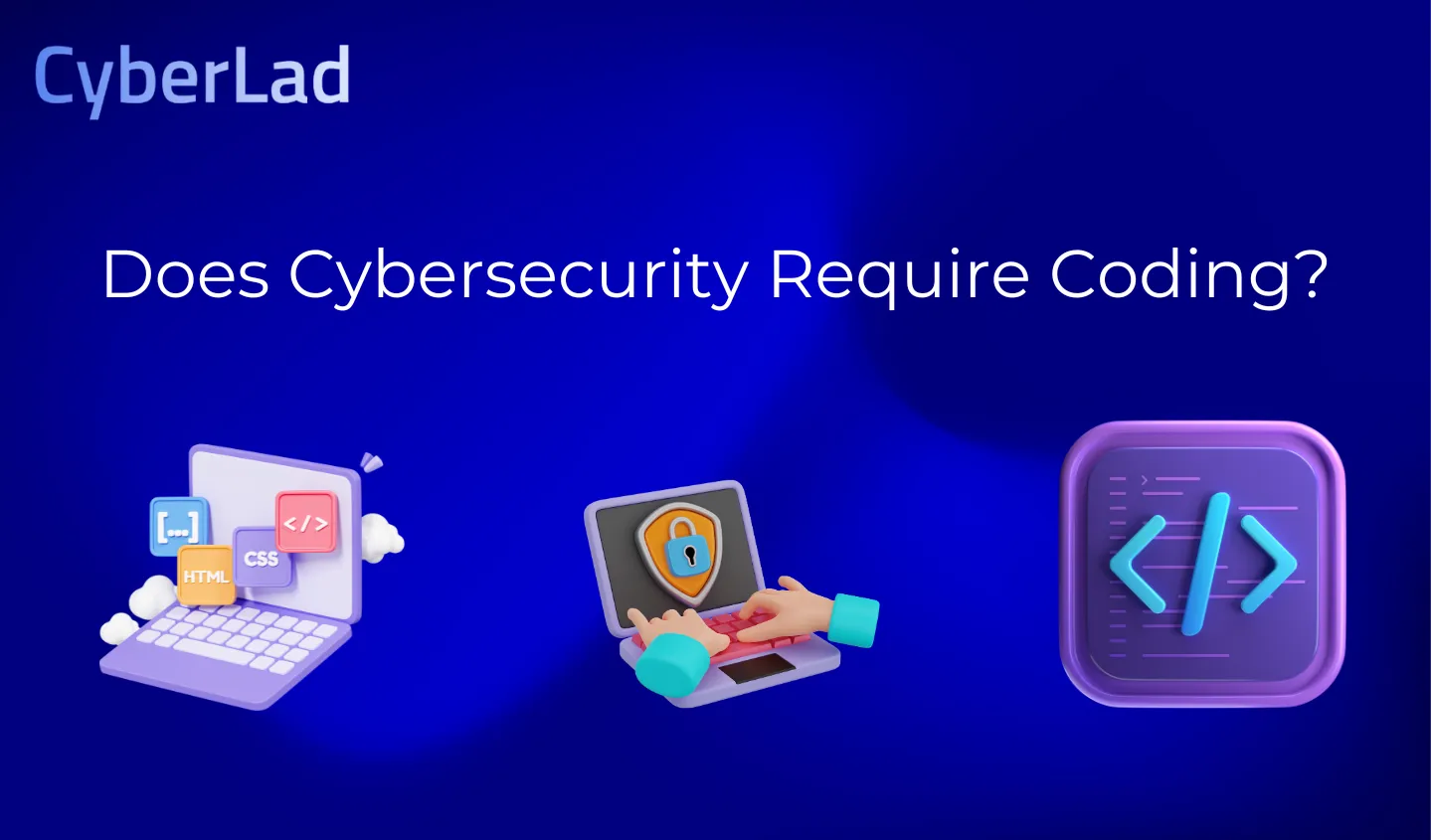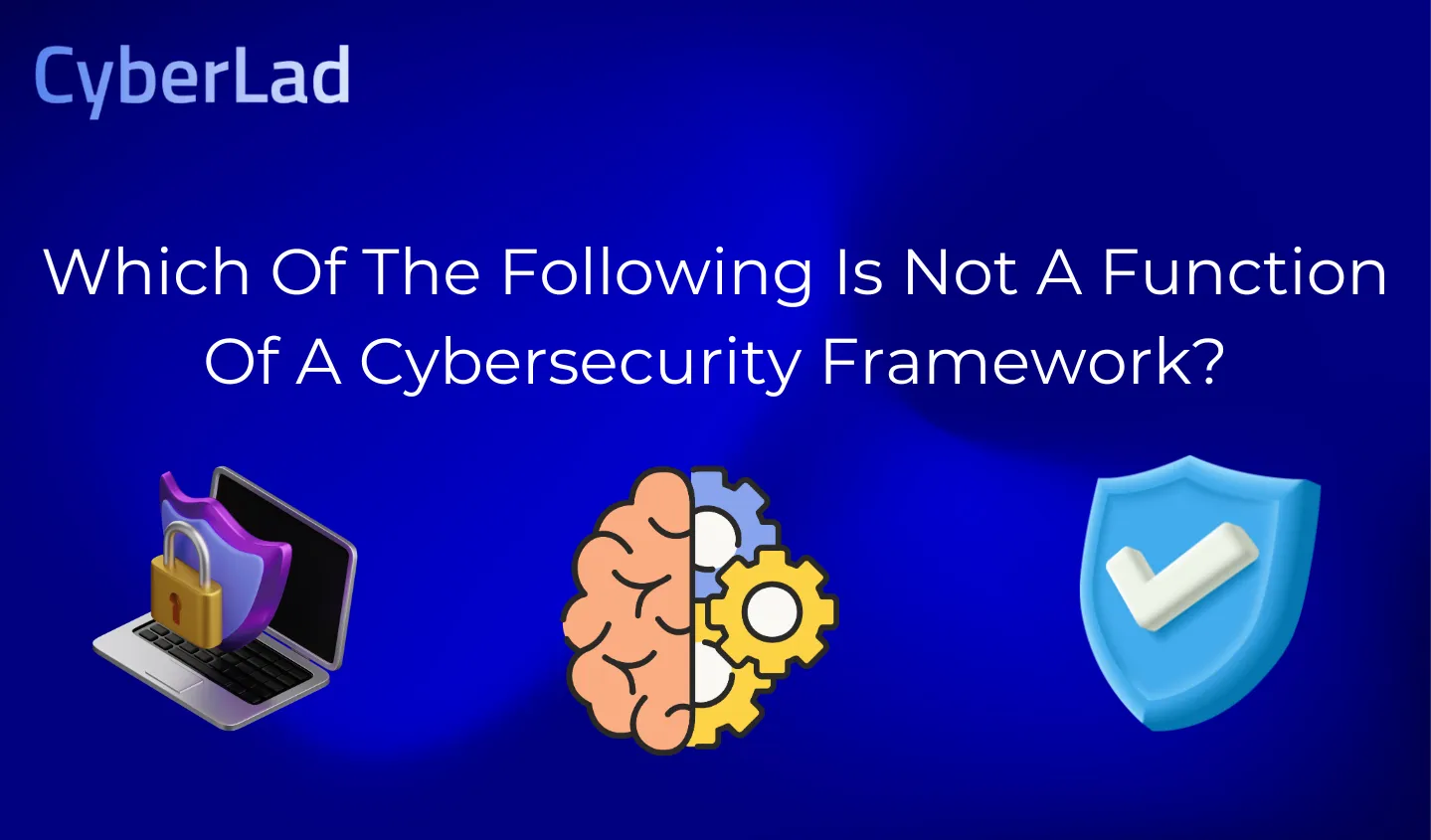With the rise of digital transformation, organizations face unprecedented cybersecurity challenges, from sophisticated cyber threats to the increasing demand for secure remote access.
As businesses adopt modern cybersecurity strategies, two critical technologies, Zero Trust Network Access (ZTNA) and Virtual Private Networks (VPNs), play a pivotal role in securing network access.
While VPNs have long been a standard for remote connectivity, ZTNA introduces a more dynamic and granular security approach aligned with the principles of Zero Trust.
This blog explores how ZTNA and VPNs fit into modern cybersecurity strategies and their key differences.
It also examines how organizations can leverage these technologies to build a robust security posture in an era of cloud computing, hybrid work environments, and advanced threat landscapes.
Not sure where your organization stands? Try our free Cybersecurity Risk Calculator to assess your risk level and take actionable steps to strengthen your security posture.
What Are Modern Cybersecurity Strategies?
Modern cybersecurity strategies encompass a range of components designed to safeguard digital assets, networks, and data from the ever-evolving cyber threat landscape.
These strategies focus on continuous monitoring, proactive threat detection, and integrating advanced technologies such as Zero Trust Network Access (ZTNA) and Virtual Private Networks (VPNs).
By incorporating these strategies, organizations can build resilient defenses adaptable to the dynamic challenges of today’s digital world.
To learn how Generative AI fits into these modern approaches, read the full article here.
Key Components of Modern Cybersecurity Strategies
- Zero Trust Architecture (ZTA)
- Assumes that no device or user can be inherently trusted, regardless of location.
- Continuously verify user identity and device integrity before granting access.
- Implements micro-segmentation to minimize lateral movement within networks.
- Threat Intelligence and Proactive Monitoring
- Continuously collects and analyzes threat data from various sources to anticipate potential risks.
- Uses real-time monitoring and automated alerts to identify and respond to suspicious activities.
- Data Encryption and Privacy Measures
- Protects sensitive data at rest and in transit using encryption protocols.
- Ensures compliance with data protection regulations like GDPR and HIPAA.
- Identity and Access Management (IAM)
- Utilizes multi-factor authentication (MFA) and single sign-on (SSO) to verify user identity.
- Enforces role-based access control (RBAC) to minimize unauthorized access.
- Endpoint Security
- Protects devices from malware, ransomware, and other threats by employing antivirus software, firewalls, and intrusion detection systems (IDS).
- Incident Response and Recovery Plans
- Establishes a clear procedure to detect, respond to, and recover from cyber incidents.
- Includes regular updates and training to ensure preparedness for emerging threats.
Building a Modern Cybersecurity Plan

Creating a robust cybersecurity plan involves strategic planning, thorough risk assessment, and integrating modern security practices.
Step 1: Risk Assessment and Asset Identification
- Identify critical digital assets, including databases, applications, and servers.
- Assess potential risks associated with each asset, such as data breaches or unauthorized access.
Step 2: Define Security Objectives and Policies
- Establish clear security goals based on industry standards and regulatory requirements.
- Develop policies to govern data handling, user authentication, and access control.
Step 3: Implement Security Controls
- Deploy technical measures like firewalls, intrusion detection systems, and endpoint protection.
- Integrate ZTNA to secure remote access and VPN for legacy systems.
Step 4: Educate and Train Employees
- Conduct regular training sessions on cybersecurity awareness, including phishing prevention and password hygiene.
- Implement role-based training to ensure employees understand their specific responsibilities.
Step 5: Monitor, Test, and Update
- Continuously monitor for security breaches or anomalous behavior.
- Regularly update security policies and tools to adapt to new threats.
- Conduct penetration testing and vulnerability assessments to evaluate security efficacy.
Measuring the Effectiveness of Your Modern Cybersecurity Strategies
Evaluating the success of your cybersecurity strategy is essential to maintaining strong defenses and minimizing risks. Key performance indicators (KPIs) can help assess effectiveness:
1. Incident Detection and Response Time
- Measure the average time taken to detect and respond to security incidents.
- Track how quickly threats are mitigated once identified.
2. Number of Detected Threats and Attacks Blocked
- Monitor the volume and types of attacks intercepted by security solutions.
- Analyze patterns to understand emerging threats and adapt defenses.
3. User Access Compliance Rate
- Evaluate adherence to access control policies, including multi-factor authentication usage.
- Monitor login patterns to identify potential credential misuse.
4. Data Breach Impact Assessment
- Quantify the financial and operational impacts of any data breaches.
- Analyze root causes and identify areas for improvement.
5. Employee Training Effectiveness
- Conduct simulated phishing attacks and measure the success rate in identifying threats.
- Track participation and performance in cybersecurity training sessions.
6. System and Network Vulnerability Assessments
- Regularly evaluate the number of vulnerabilities detected and remediated.
- Prioritize high-risk areas for immediate action.
What Is Zero Trust Network Access (ZTNA)?
Zero Trust Network Access (ZTNA), software-defined perimeters, ensures that no user or device is automatically trusted, regardless of location.
Organizations rigorously verify every access attempt against company policies through a trusted broker before granting entry.
By enforcing strict identity verification and limiting application visibility, ZTNA prevents unauthorized lateral movement within the network and reduces potential attack vectors.
ZTNA strengthens network security by implementing multiple defense layers that obscure internal systems from external threats.
It uses encrypted tunnels to conceal IP addresses and adopts a “dark cloud” approach, restricting unauthorized access to applications and services.
The core elements of ZTNA include differentiated access for applications and networks, TLS encryption instead of traditional MPLS for secure, internet-based tunnels, and device risk assessment.
Additionally, ZTNA seamlessly integrates with Identity Provider (IdP) services and Single Sign-On (SSO) platforms to ensure precise access control.
Read More On: What Is GRC in Cybersecurity? Everything You Should Know
How Does ZTNA Work?

ZTNA strengthens modern cybersecurity strategies by verifying user identity before granting access to applications.
Once authenticated, the ZTNA service securely provisions access through an encrypted tunnel, shielding corporate applications and services from exposure.
This approach ensures that IP addresses remain hidden, adding an extra layer of protection against potential threats.
By leveraging the principles of software-defined perimeters (SDP), ZTNA enforces strict access controls, allowing users to see only the applications and services they are authorized to use.
This prevents attackers from exploiting compromised credentials or devices to move laterally within the network, reducing the risk of unauthorized access and data breaches.
For more insights on cybersecurity tools, check out the Top 10 Cybersecurity Forensic Tools for Ethical Hackers in 2025.
What Is a Virtual Private Network (VPN)?

A VPN creates a secure, encrypted connection between a user’s device and an organization’s digital infrastructure, enabling remote access to network resources.
By encrypting transmitted data, a VPN ensures that unauthorized parties cannot interpret the information, preserving data integrity and user confidentiality.
It also uses tunneling protocols to establish a protected pathway over the internet, masking the user’s actual IP address with one from the VPN server to enhance privacy.
With its remote access capabilities, a VPN allows employees to securely connect to internal network resources from any location, replicating the experience of being in the office.
Additionally, VPNs help users bypass geographical restrictions on content and services by routing internet traffic through servers in different locations.
How Does a VPN Work?
A VPN strengthens modern cybersecurity strategies by using secure network protocols that integrate encryption and transmission standards, ensuring fast and secure internet connectivity. Common VPN protocols include
Point-to-Point Tunneling Protocol (PPTP), Layer 2 Tunneling Protocol (L2TP), Secure Socket Tunneling Protocol (SSTP), Internet Key Exchange Version 2 (IKEv2), and OpenVPN.
These protocols establish encrypted connections that protect data from unauthorized access during transmission.
Once authenticated, a remote user gains access to the network and can interact with resources as if they were physically on-site.
The VPN encrypts all data transfers, ensuring that sensitive information remains protected within a secure “tunnel.”
While security administrators can monitor network access, they cannot see the specific applications or resources a user interacts with, maintaining both security and privacy within modern cybersecurity strategies.
To learn more about online security risks, check out Which Activities Pose the Greatest Personal Cybersecurity Risk?
Why Modern Cybersecurity Strategies Are Essential?
In today’s fast-paced digital landscape, relying on outdated security measures can leave organizations vulnerable to sophisticated cyber threats.
Modern cybersecurity strategies are essential to address the challenges posed by evolving technologies, cloud adoption, and hybrid work environments.
Traditional security models, which focus on perimeter-based protection, are no longer sufficient as networks become more decentralized.
Modern approaches like Zero Trust Network Access (ZTNA) and Virtual Private Networks (VPNs) are gaining traction due to their ability to provide secure and flexible access while minimizing risk.
ZTNA vs. VPN: Which is Better for Modern Cybersecurity Strategies?
| Features | ZTNA | VPN |
| Security Features | Customizable, granular security policies with access control at the application level. | Creates a secure tunnel between the user’s device and the corporate network. |
| Trust Model | Continuous authentication and verification of user, device, and context. | Authenticates users once per session, granting full network access. |
| Access Security Model | Access is granted per session based on user identity, device security, and app sensitivity. | Grants access to the entire network once authenticated. |
| Authentication | Uses traditional methods plus device authentication via certificates. | Relies on traditional username and password authentication methods. |
| Access Assessments | Continuously evaluates user and device security posture for enhanced protection. | Lacks continuous assessments, making it harder to detect compromised users or devices. |
| Cloud Adaptability | Optimized for fast, secure access in cloud-based environments. | May experience performance issues in cloud environments due to network routing |
| Remote Access Security | Provides a direct, secure connection to specific applications, reducing attack surfaces. | Grants broad network access, potentially increasing security risks. |
| Granular vs. Broad Access | Offers precise, role-based access to applications, minimizing unnecessary exposure. | Provides access to the entire network upon authentication, increasing exposure. |
| Third-Party Risk Management | Limits third-party access to necessary resources only, reducing risk. | Extends broad access to third-party users, lacking granular control. |
| Integration for Mergers and Acquisitions | Simplifies network integration, avoiding conflicts from overlapping IP ranges. | Merging networks can be complex due to overlapping IP configurations. |
| Network Visibility | Provides enhanced visibility into user activity and tight access control, ensuring compliance. | Secures data in transit but lacks fine-grained monitoring and access control. |
To understand how ZTNA and VPNs apply to 5G security, check out the Top SIEM Use Cases for 5G Security.
Advantages and Challenges of ZTNA and VPN

Benefits of VPN for Traditional Remote Access
Virtual Private Networks (VPNs) have long been the standard for securing remote access to corporate networks. Their primary advantages include:
- Secure Data Transmission: VPNs establish encrypted tunnels, protecting data from interception during transit.
- Broad Network Access: Once connected, users can access the entire corporate network, facilitating seamless remote work.
- Compatibility with Legacy Systems: VPNs are often compatible with older applications that may not support modern security protocols.
Why ZTNA is Gaining Traction in Cloud and Hybrid Work Environments
Zero Trust Network Access (ZTNA) is emerging as a superior alternative to VPNs, especially in modern, cloud-centric workplaces:
- Granular Access Control: ZTNA enforces least-privilege principles, granting users access only to specific applications necessary for their roles, thereby reducing the attack surface.
- Continuous Verification: Unlike VPNs, which authenticate users once per session, ZTNA continuously verifies user identity and device posture, enhancing security.
- Optimized for Cloud Environments: ZTNA solutions are designed to provide secure access to cloud-based applications, making them ideal for organizations with hybrid or fully remote workforces.
Common Security Challenges Associated with VPN and ZTNA
While both technologies aim to secure remote access, they present distinct challenges:
- VPN Challenges:
- Broad Access: Once authenticated, users have extensive network access, increasing the risk of lateral movement by malicious actors.
- Scalability Issues: VPNs can strain bandwidth and performance, particularly as organizations scale and more users require remote access.
- ZTNA Challenges:
- Implementation Complexity: Deploying ZTNA requires a shift in security architecture and may involve integrating with existing systems, which can be complex.
- Compatibility Concerns: Some legacy applications may not be compatible with ZTNA solutions, necessitating additional configurations.
Ideal Use Cases for ZTNA

ZTNA is gaining traction in cybersecurity due to its granular access control, cloud-optimized security, and continuous verification.
Unlike VPNs, which provide broad access, ZTNA restricts access based on user identity, device security, and risk levels.
- Cloud-Based and Hybrid Environments
- ZTNA is designed for organizations that rely on cloud applications (SaaS, IaaS, PaaS) and need to secure access to multiple platforms.
- Unlike VPNs, which may cause performance bottlenecks in cloud environments, ZTNA provides fast, direct access to cloud applications.
- Remote employees can securely access cloud-based tools like Microsoft 365, Salesforce, or Google Workspace without exposing the entire network.
- Third-party, Contractor, and Vendor Access
- Organizations frequently working with third-party vendors, partners, or contractors can use ZTNA to enforce least-privilege access, ensuring external users only access the specific resources they need.
- Unlike VPNs, which may give excessive access, ZTNA minimizes the risk of supply chain attacks by limiting access scope and continuously verifying user behavior.
- High-Security Environments (e.g., Financial, Healthcare, Government)
- Industries handling sensitive data, such as finance, healthcare, and government agencies, can benefit from ZTNA’s continuous authentication, strict access control, and encrypted communication.
- ZTNA enforces compliance with regulations like GDPR, HIPAA, and PCI-DSS, ensuring that only authorized users access sensitive information.
- Remote and Hybrid Workforce Security
- Organizations shifting to a remote or hybrid work model require a scalable security solution that does not overload network infrastructure like VPNs.
- ZTNA enables employees to securely access resources from any device, location, or network while maintaining strong security policies.
- Unlike VPNs, ZTNA prevents lateral movement attacks, reducing the risk of insider threats and compromised credentials.
- Reducing Network Attack Surfaces and Preventing Breaches
- ZTNA ensures that users only see and access the applications they are explicitly authorized to use, hiding all other network assets.
- This approach reduces the attack surface and prevents malicious actors from scanning, discovering, or exploiting exposed network resources.
- Unlike VPNs, which provide full network access once connected, ZTNA continuously evaluates risk and restricts access dynamically based on real-time user and device conditions.
Integrating Both Solutions for a Hybrid Approach
Many organizations are gradually shifting from VPNs to ZTNA, but still require a hybrid security approach to accommodate different operational needs. A combined VPN-ZTNA model allows businesses to leverage the strengths of both technologies while minimizing their limitations.
- Segmenting Access Based on Risk Profiles
- Use VPNs for employees needing unrestricted access to internal networks.
- Deploy ZTNA for external users, third-party vendors, and cloud-based applications, ensuring security without exposing the full corporate network.
- Enhancing Security Without Disrupting Legacy Systems
- Businesses can retain VPNs for legacy applications while implementing ZTNA for modern, cloud-native applications.
- This approach provides security improvements without requiring full infrastructure replacement, making transitions smoother.
- Reducing VPN Dependency and Improving Scalability
- Overloaded VPN infrastructures can impact performance and increase latency for remote users.
- By moving cloud and web-based traffic to ZTNA, businesses can free up VPN bandwidth and improve network efficiency.
- Transitioning to a Zero Trust Security Model
- Organizations can gradually implement ZTNA alongside existing VPNs, allowing security teams to monitor and optimize performance before fully decommissioning VPNs.
- This approach ensures that ZTNA adoption is seamless, without disrupting critical business functions.
For a deeper look into how cybersecurity tools function, read NotEvil Search Engine: How It Works and What You Can Find.
The Future of Secure Remote Access in Modern Cybersecurity Strategies
Why ZTNA is Becoming the Preferred Solution for Businesses
ZTNA aligns with the evolving security landscape by offering:
- Enhanced Security Posture: Continuous verification and least-privilege access significantly reduce the risk of breaches.
- Scalability: ZTNA solutions are inherently scalable, accommodating growth without compromising performance.
The Evolving Role of VPN in a Zero Trust Security Model
While ZTNA is gaining prominence, VPNs still have a role:
- Supplementary Security: VPNs can complement ZTNA by providing an additional layer of encryption for data in transit.
- Specific Use Cases: For certain legacy systems or specific operational needs, VPNs may continue to be relevant.
Best Practices for Organizations Adopting Modern Cybersecurity Strategies
To effectively implement modern cybersecurity measures:
- Assess and Plan: Evaluate current infrastructure and identify areas where ZTNA can enhance security.
- Educate and Train: Ensure staff understand new security protocols and the importance of compliance.
- Continuous Monitoring: Implement monitoring tools to detect and respond to threats in real time.
Final Thoughts
In today’s evolving threat landscape, organizations must adopt modern cybersecurity strategies to ensure secure remote access.
VPNs provide broad network access but pose security risks, making them suitable for legacy systems and full network access needs.
In contrast, ZTNA enforces granular access control, continuous verification, and cloud-optimized security, aligning with Zero Trust principles.
To enhance security:
- Use VPNs for on-premises access and legacy applications.
- Adopt ZTNA for cloud-based environments, hybrid workforces, and third-party access.
- Implement a hybrid model for a balanced security approach.
By integrating ZTNA, VPN, or both, businesses can enhance protection, improve access control, and future-proof their cybersecurity strategies.
To explore online security tools for anonymity, check out Best Dark Web Search Engines for Tor Browser.
Frequently Asked Questions
What is the Role of VPN in Cybersecurity?
A VPN enhances cybersecurity by encrypting user data and concealing their IP address, ensuring that browsing activity and location remain private. By anonymizing internet traffic, VPNs provide greater privacy and allow users to bypass geo-restrictions, granting access to region-locked content.
What Are the Benefits of ZTNA Over VPN?
ZTNA offers superior security compared to VPNs by enforcing continuous authentication and verifying both user identity and device security before granting access. Unlike VPNs, which allow broad network access once authenticated, ZTNA applies granular access controls, limiting users to only the resources they need. These ongoing security checks make it significantly harder for malicious actors to infiltrate and persist within an organization’s network.
What Are the Five Pillars of ZTNA?
ZTNA operates on five core security pillars: identity, device, network, application & workload, and data. These elements work together to implement a Zero Trust framework, ensuring strict access controls and continuous verification at every level.
What Is the Difference Between a Firewall and ZTNA?
Traditional firewalls follow perimeter-based security models, assuming internal users can be trusted. In contrast, ZTNA operates on a “never trust, always verify” principle, requiring ongoing user and device authentication. Unlike firewalls, which primarily protect network boundaries, ZTNA ensures that every access request is validated before granting entry, offering a more robust and adaptive security approach.
Is SSL a Type of VPN?
Yes, an SSL VPN (Secure Sockets Layer VPN) uses SSL encryption to establish a secure and private connection over the internet. SSL VPNs allow users to access restricted networks securely from any web browser without requiring specialized VPN software.
What Are the 5 C’s of Cybersecurity?
In a digital landscape where cyberattacks are increasingly frequent and complex, the 5 C’s of Cybersecurity Change, Compliance, Cost, Continuity, and Coverage serve as a vital framework for businesses to protect their operations effectively.
What Are the Golden Rules of Cybersecurity?
To effectively combat cybercriminals, Acora adheres to three fundamental principles of Information Security: Protection, Detection, and Reaction. These core rules form the foundation of a resilient cybersecurity strategy.

